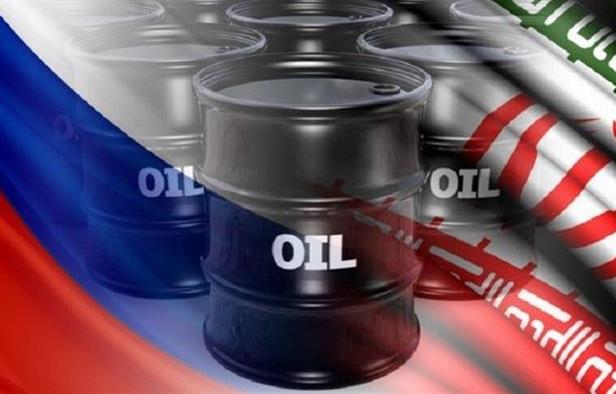The crude reality of declining crude oil prices
Saturday, 3 January 2015
Hisham Melhem/Al Arabiya
The crashing price of oil, which dominated the world of energy in the last six months, and promises to stay with us for much of 2015, has brought cheers to American consumers and tears to the oil tsars of Russia, Iran and Venezuela in particular. If the price of oil remains in the neighborhood of $60 per barrel (bbl) for much of this year, the economic impact on Russia, Iran, Venezuela and maybe Iraq, Algeria, Nigeria and Libya could be ruinous. The sharp decline in oil revenues could force both Russia and Iran to review and maybe reduce their financial and material support for the Assad regime in Syria. Some optimists speculated that the crude reality brought about by the changing energy landscape may force Iran to show more flexibility in its nuclear negotiations with the P 5 + 1 in return for a quicker process of sanction relief. The precipitous fall in the price of oil has forced governments all over the world as well as the international financial institutions to review their investments and risk assessments for 2015 and beyond.
The foreign currency reserves that Saudi Arabia, the United Arab Emirates and Kuwait have accumulated will help them navigate the turbulent markets in the immediate future, but even these economies will be forced to adjust their balance payments and maybe cut back on subsidies and social programs, in the absence of a market “correction” that would restore the price range that prevailed in the last 5 years. A sustained low price of oil could lead a country like Venezuela to default on its debts, a severe contraction in the Russian economy, and dramatic and unprecedented consequences on the Iranian economy, which is – like Russia’s economy- already teetering because of painful international sanctions. In Iraq, Libya and Yemen, very low oil prices could plunge these countries deeper into violence. So far, the three largest economies in the world; the United States, China and Japan (two major importers of oil) have benefitted from the decline of oil prices. However, if the current low price prevails for some time, this could impact those American companies that have invested large resources in the production of shale oil in States like Texas and North Dakota, who incur higher production costs.
Wild fluctuations
The story of energy, specifically the production of oil and gas in the last 20 years has been one of wild transient fluctuations in global oil prices. Prices swung from a record high of $145 bbl in July 2008 to a precipitous low of $30 bbl in December of the same year in the wake of the financial crisis. The price of oil completely collapsed in 1998 to an incredible low of $10 in the middle of the Asian economic crisis. Last June, the price of Brent crude hovered around $115, by January 2, benchmark Brent has plummeted to $57.11 bbl. But for all the turmoil in the energy markets in the last few decades, most analysts kept saying that the “fundamentals” of the market i.e. energy prices will continue to rise, that the market will remain susceptible to the production levels of the Organization of the Petroleum Exporting Countries (OPEC) and other major producers notably Russia, and that we are not likely to see a radical change in this supply model any time soon. But a “made in America” revolution may be changing some of the old energy assumptions.
The Shale revolution
In recent years the traditional energy landscape based on the production of fossil fuel, has seen radical changes particularly the increased use of wind and solar power, the production of electric vehicles and the notable advances in battery technologies which are reducing the consumption of fossil fuel, something that environmentalists and others who are concerned about climate change have been calling for. But, parallel with this alternative technological revolution, the United States initiated another energy revolution of unprecedented nature; fracking shale oil. American technical ingenuity and the fact that the U.S. has the largest deposits of shale oil in the world led American oil companies during the years of high oil prices to invest in the production of shale oil to limit imports of conventional oil.
“The sharp decline in oil revenues could force both Russia and Iran to review and maybe reduce their financial support for the Assad regime”
The result has been truly historic and put the U.S. (and Canada) at an energy inflection point. The rapid increase in shale oil production in the last few years brought America’s oil output from five million barrels per day in 2008 to an astonishing average of 9 million (bpd) in 2014. This four million bpd is more than what Iraq produces (3 million bpd). And this huge production was achieved in only six years. Even with declining oil prices, it is still expected that overall U.S. oil production will increase another 700,000 bpd this year.
Crude awakening
Much has been written about the immediate reasons for the swift decline of the price of oil in the last few months, most of it speculative and some of it downright conspiratorial. There were those who said that Saudi Arabia in collusion with the United States, decided to allow the price of oil to decline by refusing to accept cuts in production in order to punish Russia for its support of Syria. Others went even further claiming that Saudi Arabia wants to get rid of Assad to prevent the building of a pipeline from Iran to Syria running through Iraq to consolidate the so-called “Shiite Crescent” and give it an economic underpinning. The pipeline is purported to carry Gas from Iran’s South Pars gas field in the Gulf to a Mediterranean port to supply European markets.
But a more conventional economic explanation makes a lot of sense. Saudi oil minister Ali Al-Naimi made it clear that Saudi Arabia prefers keeping its market share rather than cut production, and that the low price of oil could curb future drilling elsewhere including the production of shale oil in North America. Now if in this context some of the intended or unintended consequences included tightening the screws on Russia and Iran and make it more difficult for them to continue their aggressive policies, then that would be the icing on the cake. Already both Russia and Iran are claiming that the fall in oil prices is a result of foreign machinations, and as Iran’s President Hassan Rowhani claimed a “politically motivated” conspiracy against the Muslim world.
Russia as a giant gas station
Russia’s economy was anemic even before the U.S. and Europe imposed sanctions on it following Moscow’s invasion and annexation of Crimea and before the collapse of oil prices. Russia’s claim to power on the international scene is due to the fact that it is a huge gas station, armed with a nuclear arsenal, but lacking a real functioning economy. Russia is almost a “one crop nation” since it derives 68 percent of its export revenues from sales of oil and gas, with oil revenues accounting for 45 percent of the government’s budget. A steep decline in oil prices exposes the Russian colossus as a third world country with nuclear teeth. In the first half of 2014 Russia’s economy grew by a meager 0.8 percent. Economists now predict that Russia’s GDP will contract by 4.5 percent, a dramatic decline. The country’s currency, the Ruble has lost 50 percent of its value in few months, a disaster no viable economy can withstand.
Will Russia’s economic travails lead it to rethink its economic and military commitments to the Assad regime, and to seriously contemplate a negotiated outcome and a genuine political transition that requires the Assad regime to make meaningful concessions? Given Vladimir Putin’s stubbornness, such an outcome may not materialize, but clearly the Assad regime, which is barely surviving economically, will find it extremely difficult if not impossible to survive and remain afloat now that its two main bakers, Russia and Iran are literally on the ropes.
Iran; hard times are getting harder
To balance its budget, Iran needs oil prices to hover around $140 bbl. At less than $60 bbl the Supreme leader Ali Khamenei needs an economic miracle to survive the treacherous New Year, particularly if he fails to accept serious compromises that could lead to a nuclear deal with the P-5 + 1. The irony is that Iran was slowly moving towards economic growth before the oil prices began to unravel. Iran’s reliance on oil and gas revenues is greater than Russia’s. The international sanctions have decimated Iran’s currency and reduced its oil export from 2.5 million bpd in 2011 to barely 1,050,000 bpd currently. Iran is saddled by a complex web of sanctions, and a steep decline in oil prices at a time when its commitments to the survival of the Assad regime has grown significantly in the last two years. Syria has been an economic – and human- drain on Iran. It is Iran’s military and financial support to the Assad regime, directly and through its proxy forces, particularly the Lebanese Hezbollah that saved the Assad regime from falling. Iran’s significant influence in Iraq, Syria, Lebanon and Yemen came with a high price tag in term of human and material resources. How long can Iran bleed in Syria (and Iraq) while trying to address the basic economic needs and expectations of its growing population? Will Ayatollah Ali Khamenei and the military leader Qasem Soleimani that he appointed to run Iran’s military campaigns in Syria and Iraq begin to rethink their commitment to the Assad regime, if the price of that commitment becomes more prohibitive this year as is likely the case? With harder times, come harder choices.
Will Khamenei in 2015 make the necessary and painful choices and compromises needed to reach a nuclear deal that could lead to sanction relief? American officials say that they believe President Rowhani and foreign minister Javad Zarif are truly interested in reaching a nuclear deal, but they doubt that the Supreme leader is willing to compromise. In the summer of 1988 when Ayatollah Ruhollah Khomeini decided to accept cease fire in the long war with Iraq, he likened his decision to drinking from “poisoned chalice”. Time will tell whether Ayatollah Ali Khamenei will decide to save his regime by drinking from a similar chalice by accommodating the International community’s concerns over his nuclear ambitions and maybe over Syria’s plight.




















